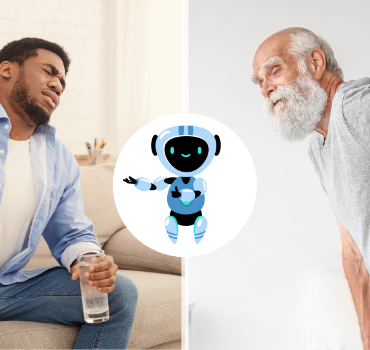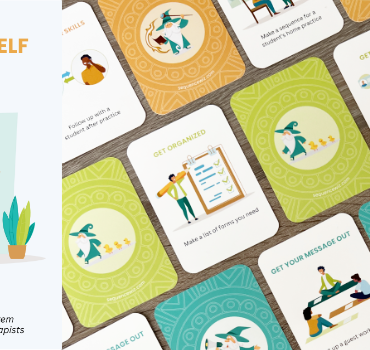AI in yoga: Three main concerns about AI dispensing yoga advice

There is no doubt at this point that AI is here to stay, and it will continue to grow rapidly. And it is impossible to predict what exactly it will evolve into; nobody really knows, even if they pretend otherwise. In terms of yoga teaching, it doesn’t seem that AI would be able to replace yoga teachers and therapists for in-person classes and sessions, most of all because human contact and personal connection between teachers and students might only strengthen with the encroach of technology in every other aspect of our lives.
However, in the virtual space, it is clear that companies are constantly working on making AI our constant companion, with its assignments ranging from a personal assistant to a private confidant. Many, many companies now offer AI companions with different personalities and made-up biographies that can organize your calendar, put together a workout plan for you, give you relationship advice, and cheer you up when you need it most.
I am pretty sure that those same handy AI helpers will attempt to lead you in a yoga practice if you so desire. These are the three main concerns I have about AI dispensing yoga advice.
The source is important. There is no standard protocol in yoga and yoga therapy, and each yoga tradition approaches practice design a bit differently. To get the most out of practices, you need to have some fundamental understanding of the source of the yoga practice you receive, which will help you better understand the approach, style, and reasoning behind it. But if your AI assistant pulls a practice together from several different sources and scrambles it all into one practice without any particular logic, all the promised benefits will be lost.
So far, I found that, more often than not, Chat GPT would pull some practice from the Yoga Journal website that was close to the parameters I set. This may or may not be the best source of advice. The full practices and corresponding pose images that AI presented were usually behind a paywall, so I do not know if the Yoga Journal had given permission to be used as the source for this output.
This brings up another important point, one that other creators and artists have already been struggling with for a while: Copyright infringement. AI models are trained on massive datasets that come from the internet and other sources. Many of those sources are copyrighted, and developers do not have explicit permission from the owners to use their materials. However, many developers believe that training AI on somebody else’s work is fair game because the act of training AI is different enough from the work’s original purpose, so it doesn’t qualify as copyright infringement. Digital illustrators, for example, have already found out the hard way that their unique drawing style can be flawlessly imitated by the machine, and AI can generate those digital illustrations much faster at a cost of close to nothing. Where does that leave the illustrators?
My concern is that yoga teachers who put out yoga videos and other digital products are not far behind. Let’s say you spent time, energy, and money to create a yoga course on yoga for better sleep and put it online behind a paywall. But your hosting provider made a deal with AI developers behind the scenes to give them permission to use their datasets for AI training and now your stuff is in a big pot of available information AI can pull from. Anybody who asks AI for a yoga practice for better sleep might get your information free of charge. It doesn’t seem fair. And if your digital content is available on the internet for free, nobody would even bother to ask for your permission and certainly wouldn’t credit you anywhere.
Then, there is always a question about the quality of the output. We all know that there is both good and bad advice on the internet about everything, including appropriate yoga practices. If you do not know the source of the information and don’t know much about the subject, it can be very hard to judge the quality of what you receive.
Some AI responses can be comically inaccurate, like its answer to the “How many rocks should I eat per day?” question that’s been ridiculed a few months back. Those silly responses are easy to identify. But what if somebody asks AI for a yoga practice for neck pain? The consequences of poor advice can potentially be damaging.

The bottom line is that we don’t have much say in the matter. Developers are competing with each other on how fast they can train their AI helpers and integrate AI into all sorts of applications behind the scenes that we will never even guess. Before you know it, AI will be in everything, like high-fructose corn syrup 🙂 As I see it, all we can do is stay abreast of what’s happening in the AI development space, diversify our offerings so that we could pivot to some other way of delivering yoga instruction, and maintain strong relationships with our students.
What concerns do you have about AI in yoga? Or are you looking forward to what it can offer?









